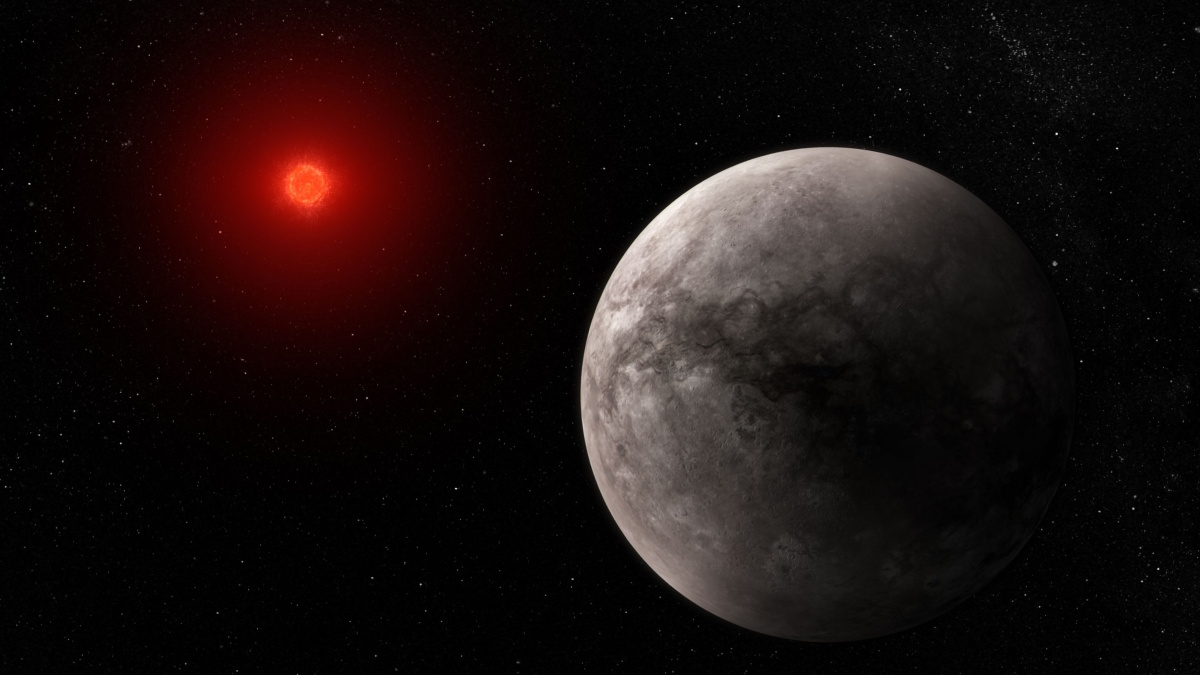[ad_1]
Artist’s illustration of TRAPPIST-1 b.
Credit: ILLUSTRATION: NASA, ESA, CSA, Joseph Olmsted (STScI) SCIENCE: Thomas P. Greene (NASA Ames), Taylor Bell (BAERI), Elsa Ducrot (CEA), Pierre-Olivier Lagage (CEA)
Hello, readers, and welcome back to This Week in Space. If March came in like a lamb, it’s going out like a lion. This week, news from the aerospace sector is positively turbulent. We’ve got mission updates, furloughs, announcements of spinoff companies, and even a whole new space agency. We’ve also got launches and landings, an incomprehensibly huge black hole, and a solar flare scheduled for Saturday that is definitely not a prank.
NASA to Announce Artemis II Astronauts Monday
Monday, NASA and the Canadian Space Agency (CSA) will announce the names of the astronauts who will fly the Artemis II mission.
The agency will make the official announcement at 11 a.m. EDT on Monday, April 3, from NASA Johnson Space Center’s Ellington Field in Houston. Teasing the announcement, the agency said in a statement, “Traveling aboard NASA’s Orion spacecraft and launching on the Space Launch System rocket, the mission is the first crewed flight test on the agency’s path to establishing a long-term scientific and human presence on the lunar surface.”
The event will air on NASA Television, the NASA app, and the agency’s website.
Psyche to Launch in October 2023
NASA officials also announced this week that the agency’s Psyche mission, which will explore the asteroid of the same name, is now “on track to launch in October 2023 after a one-year delay to complete critical testing.” The launch window will open on Oct. 5 and close on Oct. 25.
Psyche is running late by over a year because its original ride—Artemis I—missed its launch window last summer. Due to the year’s delay, Psyche also has an updated mission plan. Now, the probe’s itinerary includes a flyby of Mars for a gravity ‘slingshot,’ arriving at the asteroid in August 2029. The mission will then begin its 26-month science phase, making observations and collecting data as Psyche orbits its namesake asteroid at different altitudes.
According to NASA, the redesigned flight plan “gives the mission more flexibility in how the spacecraft uses its electric propulsion thrusters to reach the asteroid, move between orbits, and remain in orbit.”
Psyche (the spacecraft) is in a clean room at the Astrotech Space Operations Facility near NASA’s Kennedy Space Center in Florida. Agency officials said the spacecraft assembly is complete except for installing the solar arrays and the imagers, which the agency may work on this spring.
Virgin Orbit to Furlough 85% of Employees
In a Thursday filing with the federal Securities and Exchange Commission (SEC), Virgin Orbit Holdings announced that it would furlough approximately 85% of its workforce. The company added that the layoff was necessary “to reduce [Virgin Orbit’s] expenses in light of the Company’s inability to secure meaningful funding.”
Virgin Orbit, which operates the LauncherOne aerial launch system, has struggled for years to scrape together enough cash to pay its bills. The company had already furloughed most of its employees on March 15 as part of a “pause in operations” while it sought to raise money. Its finances were already under pressure from loans with eye-watering interest rates when the company weathered multiple launch failures, including one that killed a pilot. Then, in February, LauncherOne suffered a launch failure that destroyed the rocket entirely and left the company reeling. It’s not clear what comes next.
Webb Telescope Takes Temperature of Torrid TRAPPIST-1
An international team of researchers has used NASA’s James Webb Space Telescope, like an infrared thermometer, to measure the temperature of a nearby rocky exoplanet named TRAPPIST-1 b. The measurement is based on the planet’s thermal emission spectra: Webb’s Mid-Infrared Instrument (MIRI) can detect heat energy from infrared light. The result indicates that the tidally locked planet’s day side has a temperature of about 500 kelvins (roughly 450 degrees Fahrenheit)—which the researchers say suggests that TRAPPIST-1 b has no significant atmosphere.
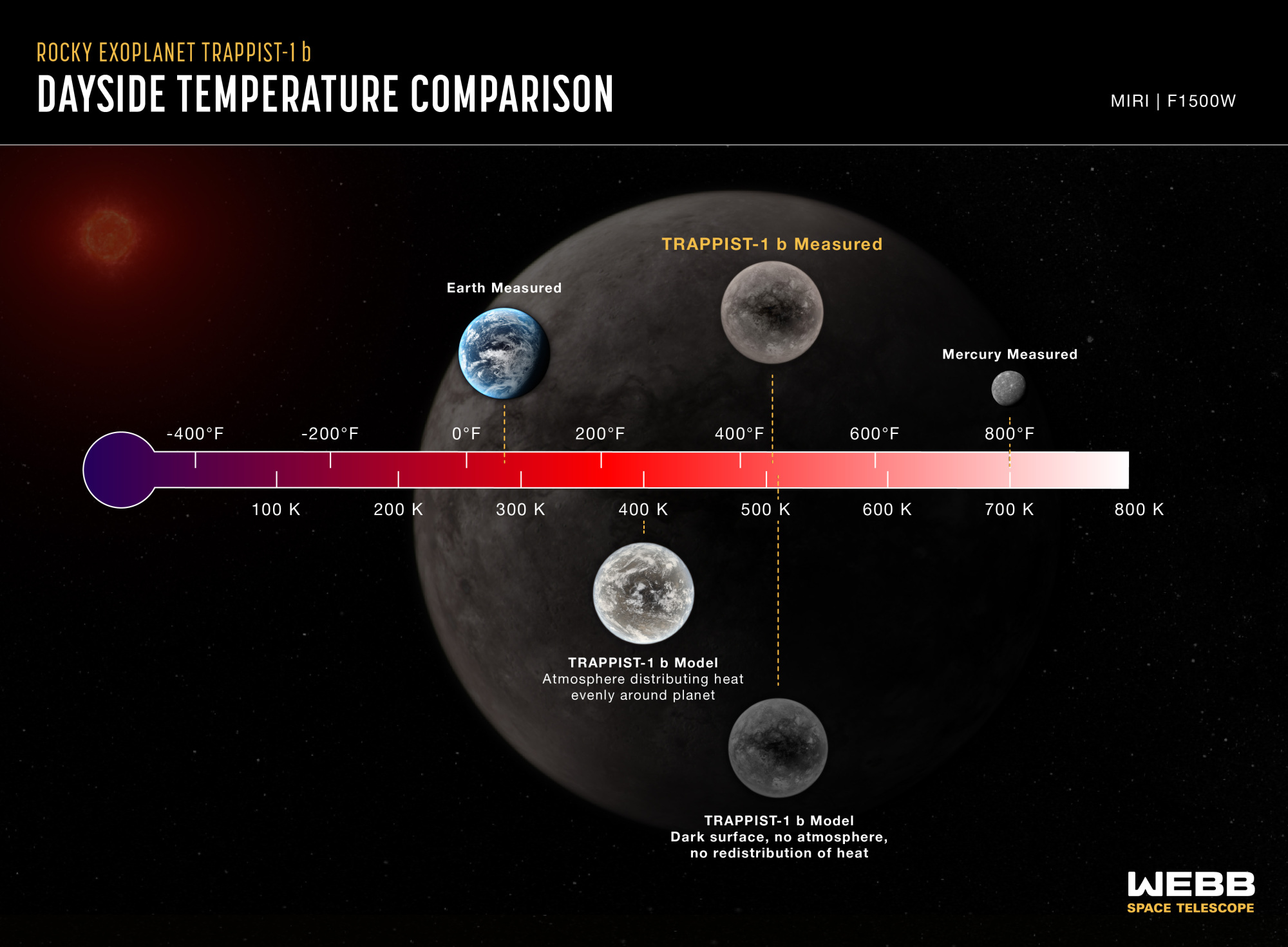
Credit: NASA/Webb
According to NASA, this is the first detection of any form of light emitted by an exoplanet as small and as cool as the rocky planets in our own solar system. The result marks an essential step in determining whether planets orbiting small active stars like TRAPPIST-1 can sustain atmospheres needed to support life.
“These observations really take advantage of Webb’s mid-infrared capability,” said Thomas Greene, an astrophysicist at NASA’s Ames Research Center and lead author on the study, which ran this week in Nature. “No previous telescopes have had the sensitivity to measure such dim mid-infrared light.”
Spain Launches Independent Space Agency
Spain now has its own space agency. The country’s Council of Ministers voted on March 7 to allow the Spanish Space Agency, or Agencia Espacial Española (AEE), to commence operations as of this month.
The newly minted agency will be based in Seville. According to a statement from Spain’s Ministry of Science and Innovation, AEE’s mission is to “guarantee Spain’s strategic action in the field of space, both from the point of view of its technological development and the use of space in areas such as security, Earth observation, geolocation, and telecommunications.”
In addition to the blessing of the European Space Agency (ESA), AEE has an initial budget of 700 million euros, which it intends to use to galvanize the nation’s space sector.
Hubble Finds Saturn’s Rings Are Heating Its Atmosphere
Astronomers working with the Hubble telescope have figured out what’s going on in a band of puzzling warmth that lights up Saturn’s subtropical latitudes with an ultraviolet glow. Their disproportionate brightness in the Lyman-alpha band makes them look like the planet is bigger at that latitude than it is—hence the term “Lyman-alpha bulge.” Invisible to the naked eye, the warm bands have defied explanation—perhaps until now.
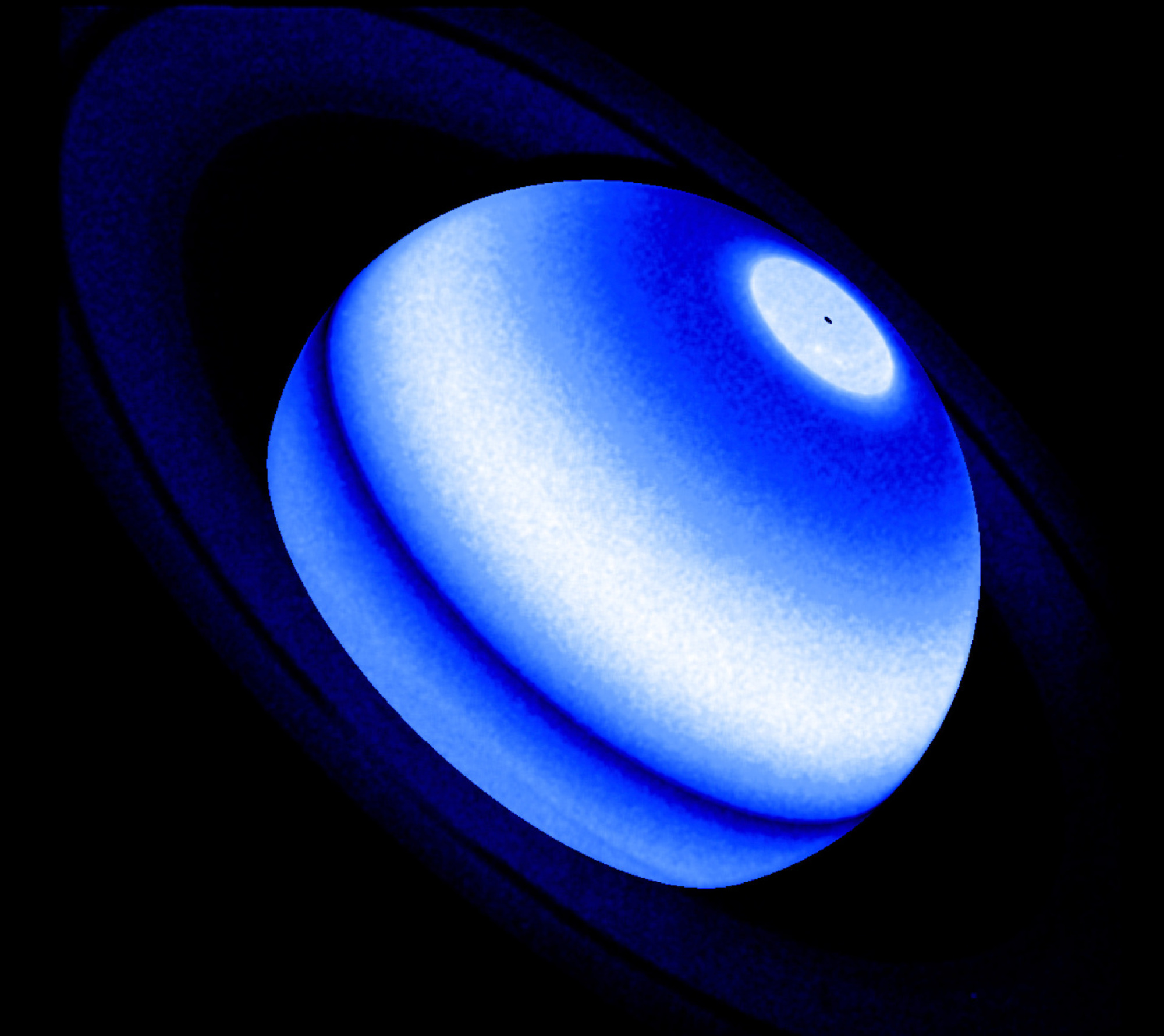
Saturn’s “Lyman-alpha bulge,” seen in the ultraviolet band through the Hubble telescope.
Credit: NASA/Hubble/STSCI
The study carefully hedges that it’s not a perfect slam-dunk explanation for how the rings are heating Saturn’s atmosphere—but it says that the most likely culprit is friction from a constant rain of ice crystals falling in from the gas giant’s inner rings.
Boeing Starliner Now Scheduled to Fly in July
The first crewed flight of Boeing’s Starliner space capsule to the International Space Station (ISS) will take place in July, Boeing and NASA officials said in a joint statement Wednesday.
The officials said the CST-100 Starliner mission, which SpaceX had hoped to launch in April or even in March, will now take place no earlier than July 21.
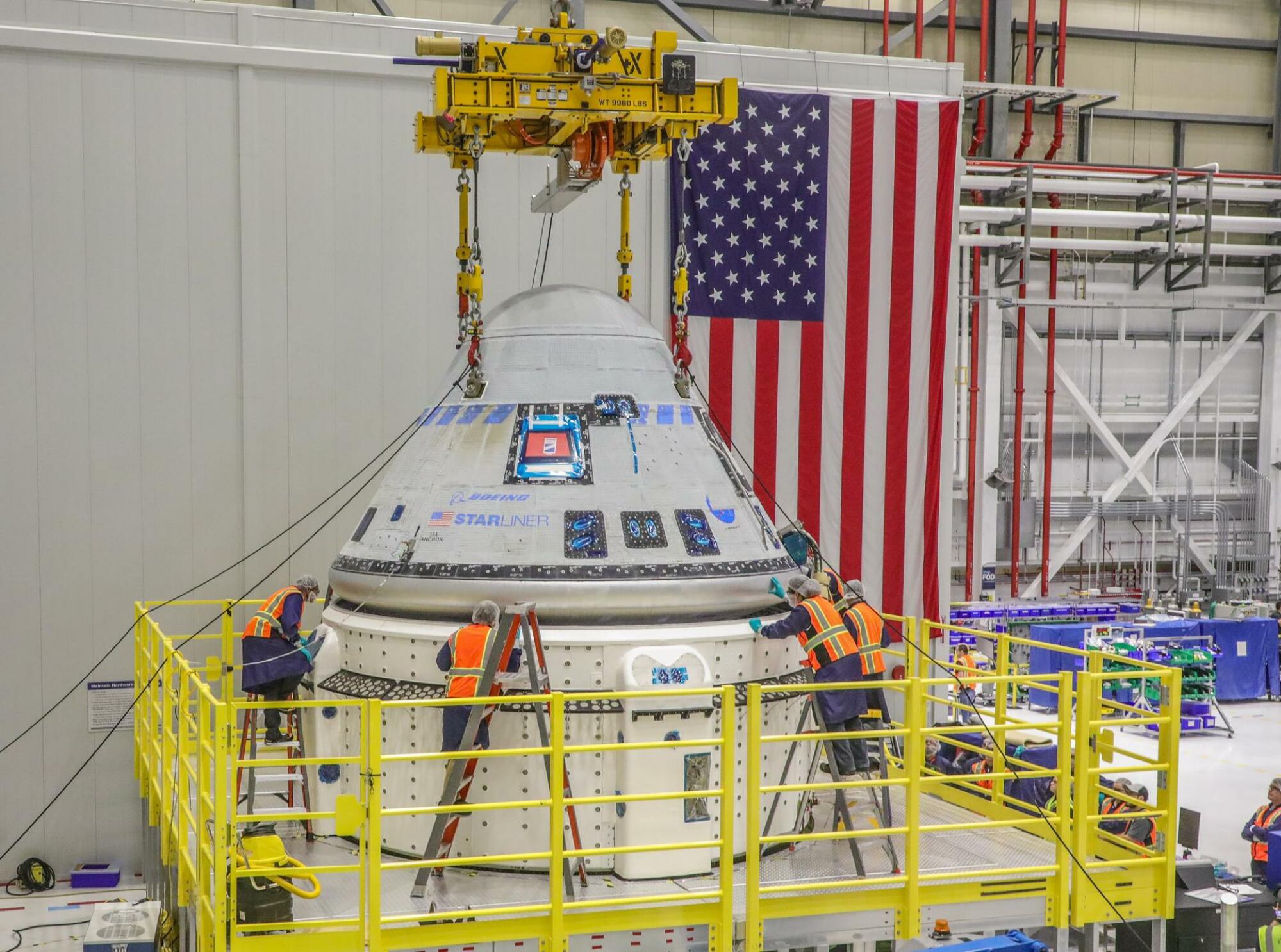
Boeing’s Starliner capsule, at the Kennedy Space Center.
Credit: NASA/Boeing/KSC
“We’ve deliberated and decided that the best launch attempt is no earlier than July 21 for CFT,” Steve Stich, the manager of NASA’s Commercial Crew Program, told reporters after the announcement.
“We feel pretty confident with that date,” added Mark Nappi, Starliner program manager at Boeing.
Stich explained that the agency needs more time to certify the parachute system designed to bring the astronauts and the spacecraft safely back to Earth if something were to go wrong during the flight. So, the agency is doing ground tests on the parachute starting in May.
The Starliner will launch on a United Launch Alliance Atlas V rocket from Cape Canaveral in Florida. When it does, it will carry two NASA astronauts, Barry Wilmore, and Sunita Williams, to the ISS, where they are expected to stay for “at least eight days.”
Lockheed Martin Founds Spinoff Company to Build Telecom Infrastructure on the Moon
Lockheed Martin has announced the formation of a new company called Crescent Space to start building infrastructure on the Moon. Its goal is to deploy a satellite constellation in lunar orbit to provide communication and navigation services.
The network will be called Parsec, and the company says it will be built on established Lockheed Martin tech.
Astronomers Discover a Black Hole of 30 Billion Solar Masses
Astronomers have used gravitational lensing to discover what may be the largest black hole ever found.
The giant black hole has a mass of 30 billion suns and sits at the center of a galaxy located hundreds of millions of light-years from Earth. Astronomers call the cosmic monster an “ultramassive black hole,” even larger than the usual, garden-variety galactic supermassive black holes of a few million to a few billion solar masses.
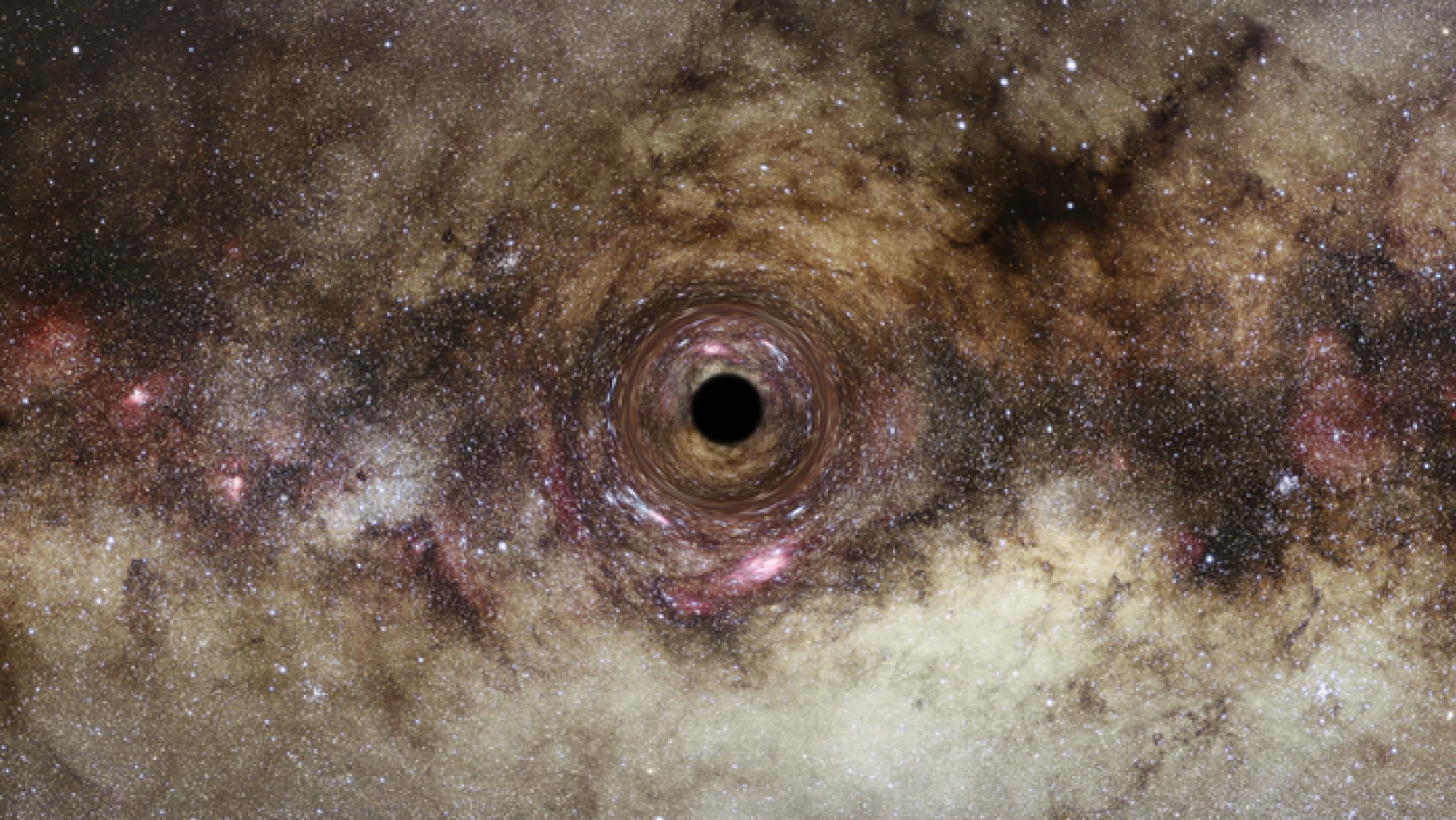
Artist’s impression of this ridiculously huge black hole.
Credit: ESA/Hubble, Digitized Sky Survey, Nick Risinger (skysurvey.org), N. Bartmann
Astronomers discovered the black hole during observations of a galaxy located much farther away from Earth than the one this monster black hole lives in, using an effect known as gravitational lensing. Gravitational lensing occurs when gravity bends the light around extremely massive objects. It can distort the light from celestial objects, bending and magnifying it in strange ways. “Serving as nature’s own telescope,” agency officials said in a statement, “gravitational lensing frequently helps astronomers to increase the magnification of objects too distant to be properly visible to human-made telescopes.”
Launches and Landings
Tuesday afternoon, Russian space agency Roscosmos retrieved the Soyuz MS-22 capsule whose coolant loop was destroyed in December by what may have been a micrometeoroid. Instead of carrying back the three crew members it carried into orbit, the capsule carried a return shipment of assorted science equipment and other cargo.

Credit: Roscosmos
Roscosmos has also scrambled an empty Soyuz capsule, MS-23, for the semi-stranded crew members, instead of entrusting human lives to a capsule with little to no cooling capacity. However, the crew members will be in orbit for significantly longer than their expected six-month stay.
Stateside, SpaceX launched another set of Starlink satellites from Canaveral on Wednesday afternoon. The mission, designated Starlink 5-10, brings the total number of Starlink satellites to 4,217.
At Vandenburg Thursday, SpaceX was set to launch the first 10 satellites in a very different constellation. The U.S. Space Development Agency, established in 2019, has SpaceX booked to carry a constellation of hundreds of missile warning satellites—of which these first 10 are the vanguard and alpha test. However, mission control called off the launch moments before ignition. They will try it again Friday morning, just after 10 a.m. Pacific.
Skywatchers Corner
As the Sun ascends into the fiery peak of its solar cycle, it has been throwing off more and more solar flares. Over the last week, the Sun has developed another small but striking coronal hole and emitted two strong solar flares, one of which peaked on Tuesday. SpaceWeather.com posted this map of the places that reported seeing auroras from Tuesday’s X-class flare—visible from as far south as Oklahoma and Florida.
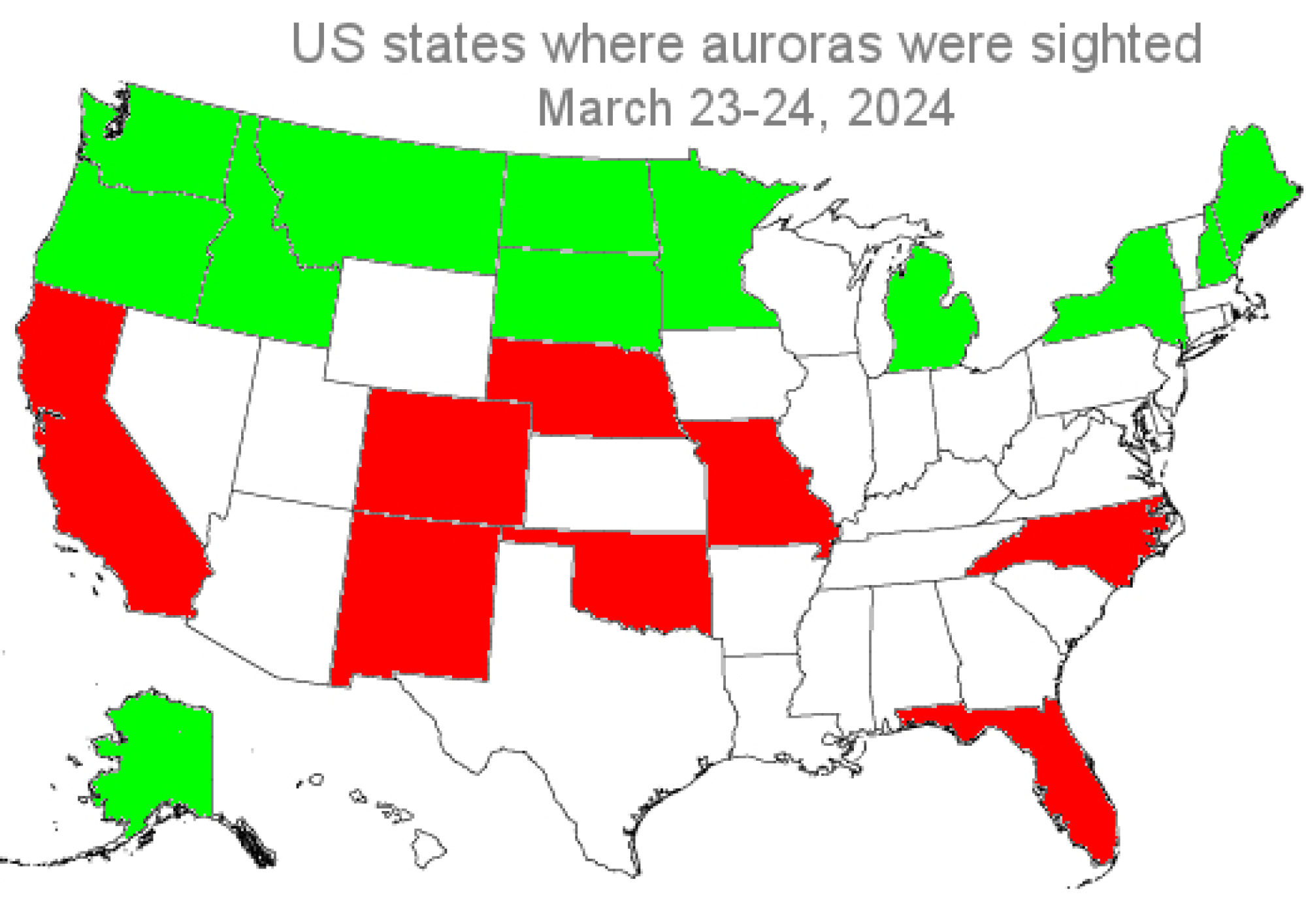
US states with reports of auroras after Tuesday’s solar flare.
Credit: SpaceWeather.com
SpaceWeather reports that another “minor stream of solar wind” is heading straight for Earth, due to arrive Saturday (April 1). But if you’re already going to be outside looking for the aurora, why not check out the pleasant spectacle of five planets, all visible within about 45 degrees in the sky?
[ad_2]
Source link

